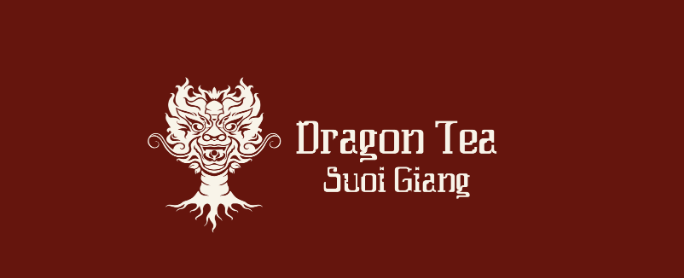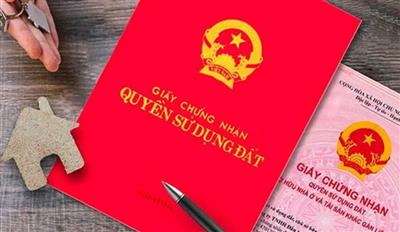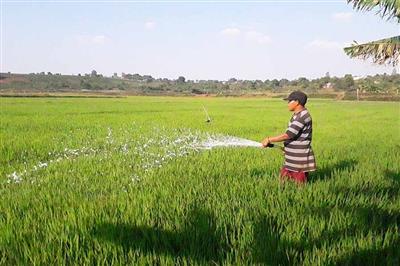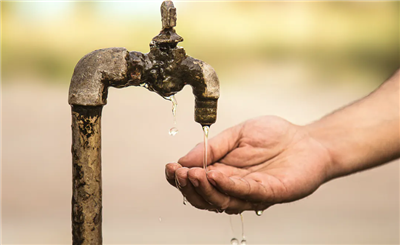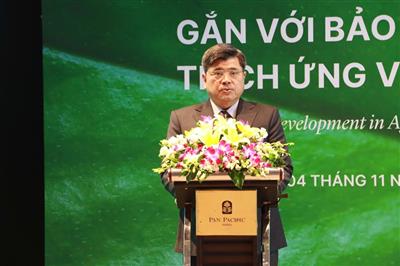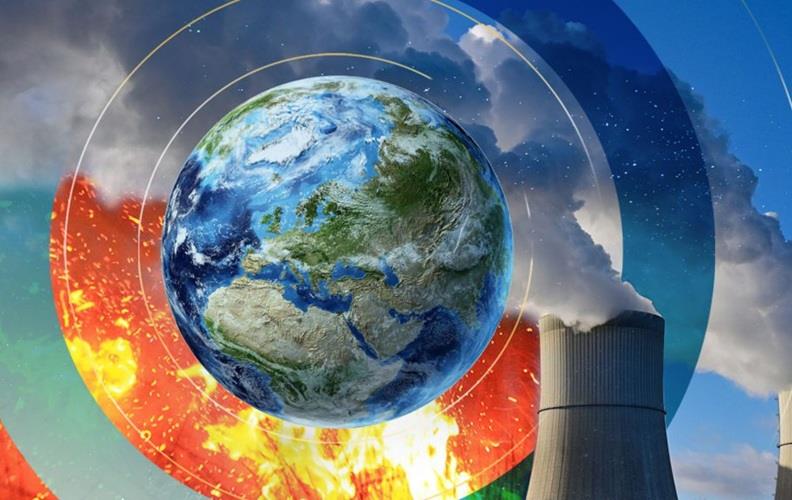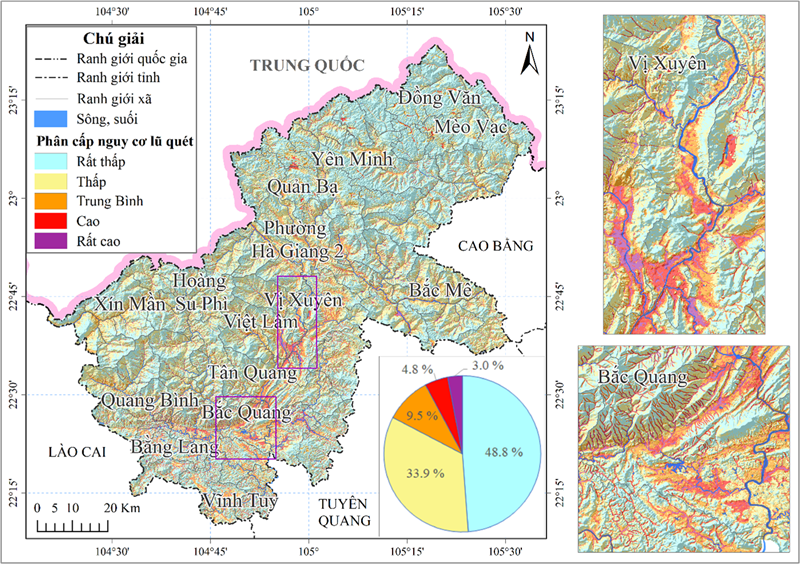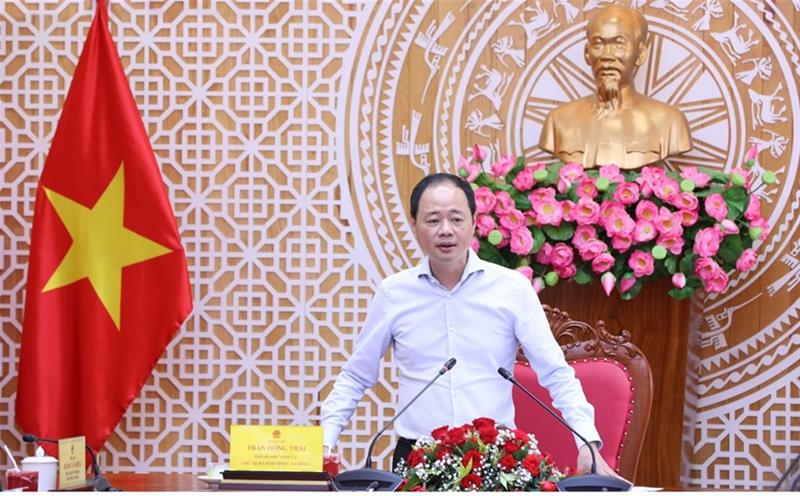
Part 1: Water use efficiency - The foundation of Vietnam’s green agricultural transition
09/11/2025TN&MTIn the context of climate change, increasing water scarcity, and the urgent need to reduce greenhouse gas (GHG) emissions, improving water use efficiency in rice cultivation has become both a scientific priority and a central policy task. From field-level irrigation studies to standardized scientific water management procedures, Vietnam is gradually shaping a resource-efficient, low-emission agriculture, laying the groundwork for green transformation and sustainable development.
Water use in rice production: Current situation and sustainability challenges
Agriculture is the largest water-consuming sector in Vietnam, accounting for about 80% of total annual water withdrawals, equivalent to 93 billion cubic meters. Within this, rice cultivation dominates, with 7.12 million hectares of irrigated paddy fields, mainly located in the Red River Delta, the Central Coastal Region, and the Mekong Delta.
Each hectare of rice in the summer–autumn crop consumes approximately 4,500–5,500 m³ of water, while the winter–spring crop requires 5,500–6,500 m³/ha, excluding losses from inefficient irrigation. Altogether, at least 46.8 billion m³ of water are used annually for rice production, accounting for more than half of total agricultural water consumption.

Agriculture accounts for about 80% of Vietnam’s total annual water use, around 93 billion m³, mostly for rice cultivation across 7.12 million hectares of irrigated paddy fields in the Red River Delta, Central Coastal Region, and Mekong Delta
Vietnam is among the countries most affected by climate change and localized water scarcity. Of the 830 billion m³ of water generated annually, two-thirds originate outside national borders, making the country’s water security highly dependent on international river basins. Meanwhile, the domestic water volume (~300 billion m³ per year) is unevenly distributed, leading to dry-season shortages in key agricultural regions.
In parallel with water stress, GHG emissions from rice cultivation are among the major challenges for Vietnam’s agriculture. According to the 2010 national GHG inventory, the agricultural sector emitted 88.35 million tons of CO₂-equivalent, accounting for 35.8% of national emissions, of which rice cultivation contributed more than 44.6 million tons (50.5%). Projections suggest that by 2030, this figure could increase to 96.7 million tons of CO₂-equivalent without mitigation measures.
Thus, the rice sector faces two simultaneous pressures: declining water availability and the demand for GHG emission reduction. To ensure food security while fulfilling Vietnam’s commitment to net-zero emissions by 2050, as declared by the Prime Minister at COP26 (Glasgow, 2021), effective water management must integrate science, technology, and policy.
Water use efficiency: A key indicator for green agriculture
Water Use Efficiency (WUE) reflects the relationship between irrigation water consumption and agricultural yield. Improving WUE means reducing the volume of water required per unit of agricultural output, thereby conserving resources, saving pumping energy, and reducing related emissions.
According to the Vietnam Academy for Water Resources (VAWR), experimental studies in the Red River Delta show that scientific irrigation management can reduce water use by 20–40% and GHG emissions by 20–48.8% compared with traditional continuous flooding. Specifically, irrigation volumes ranged between 3,100–3,700 m³/ha per crop—significantly lower than the current average of 4,500–6,500 m³/ha.
These findings highlight not only the scientific value of water-saving irrigation technologies but also the crucial role of modern field irrigation systems in sustainable agricultural development. Every cubic meter of irrigation water saved translates into lower pumping energy, reduced electricity use, and less indirect emission from energy production.
Enhancing water use efficiency is not just a technical matter but a national policy priority. The Strategy for Irrigation Development to 2030, with a Vision to 2045, targets that 60% of rice-growing areas adopt advanced, water-saving, and low-emission farming practices. This goal is embodied in the project on “One million hectares of high-quality, low-emission rice in the Mekong Delta”, approved under Decision No. 1490/QĐ-TTg (November 27, 2023), a turning point in shifting from “yield-based agriculture” to “value-based and low-emission agriculture.”
Scientifically, several improved irrigation models have been tested. The “shallow–dry–sun exposure” or “alternate wetting and drying (AWD)” methods have demonstrated 10–20% water savings while maintaining stable yields. In pilot models in Hà Nam Province, yields even increased by 3–9%, thanks to intermittent soil aeration that improved nutrient uptake in rice plants.
From a technical perspective, studies by Nguyen Xuan Dong (2008), Nguyen Viet Anh (2010), and Le Xuan Quang (2015–2018) consistently conclude that periodic drainage irrigation (AWD or “shallow–dry–sun exposure”) maintains plant growth while reducing methane (CH₄) emissions by 10–44%, due to shortened anaerobic periods in paddy soils.
Toward standardization and smart water management in rice cultivation
One of the most significant contributions of Vietnamese researchers has been the institutionalization of scientific findings into national standards, enabling systematic transfer into production.
The Ministry of Science and Technology has issued TCVN 142.73:2024 – Greenhouse gas mitigation: water-saving irrigation regime for rice (Vietnam National Standard), chaired by Assoc. Prof. Dr. Le Xuan Quang. The standard stipulates that: (1) Irrigation water use must be reduced by at least 20% compared with TCVN 8641:2011; (2) Methane (CH₄) emissions must be reduced by at least 20%; (3) Production efficiency must increase by more than 10%; (4) Rice plants must have stronger stems, less lodging, reduced post-harvest loss, and improved pest resistance.
This marks a major milestone in translating scientific research into legal frameworks, paving the way for the nationwide expansion of water-saving irrigation models. At the same time, the integration of IoT and AI technologies into paddy field water management is creating new opportunities. A pilot model in Tam Da Commune (Bac Ninh Province), covering 5–10 hectares, has delivered clear benefits: 20–50% reduction in irrigation water, reduced methane emissions, and yield increases exceeding 10%.
The system uses ultrasonic water-level sensors, automatic weather stations, and remotely controlled solenoid valves, all connected through IoT and cloud-based platforms for real-time water management. When rainfall exceeds 0.1 mm, irrigation automatically stops; when the water level falls 10–12 cm below the field surface, the irrigation valve automatically opens. This model exemplifies smart irrigation, allowing farmers to base production decisions on data rather than experience.
In the era of digital transformation and net-zero commitments, integrating modern technologies (IoT, AI) with scientific irrigation regimes (AWD, shallow–dry–sun exposure) is an inevitable trend. It represents not only technical progress but also a scientific foundation for sustainable agricultural policy—conserving water resources and protecting the climate.
Improving water use efficiency in rice cultivation is pivotal to realizing Vietnam’s green agricultural transition. The combination of irrigation science, standardized procedures, and digital technology is gradually transforming traditional farming practices.
Every drop of water saved is a step toward environmental protection; every optimized irrigation process is a tangible contribution to low-emission goals. Lessons from research models show that smart water management is key to building a productive, green, and sustainable future for Vietnam’s agriculture.
Effective water management is not only a technical solution but also a strategic pathway for Vietnam’s agriculture to grow greener and more climate-resilient.
In Part 2: “Alternate wetting and drying – A scientific solution for emission reduction in Vietnam’s rice production,” the series will analyze experimental results of AWD irrigation, providing scientific evidence that it can reduce irrigation water by 40%–50% and nearly halve methane emissions, a crucial step toward low-emission agriculture.
Source: Assoc. Prof. Dr. Le Xuan Quang and Dr. Pham Van Ban – Vietnam Academy for Water Resources, 2024; summarized and synthesized from scientific research discussions.
Viet Anh

